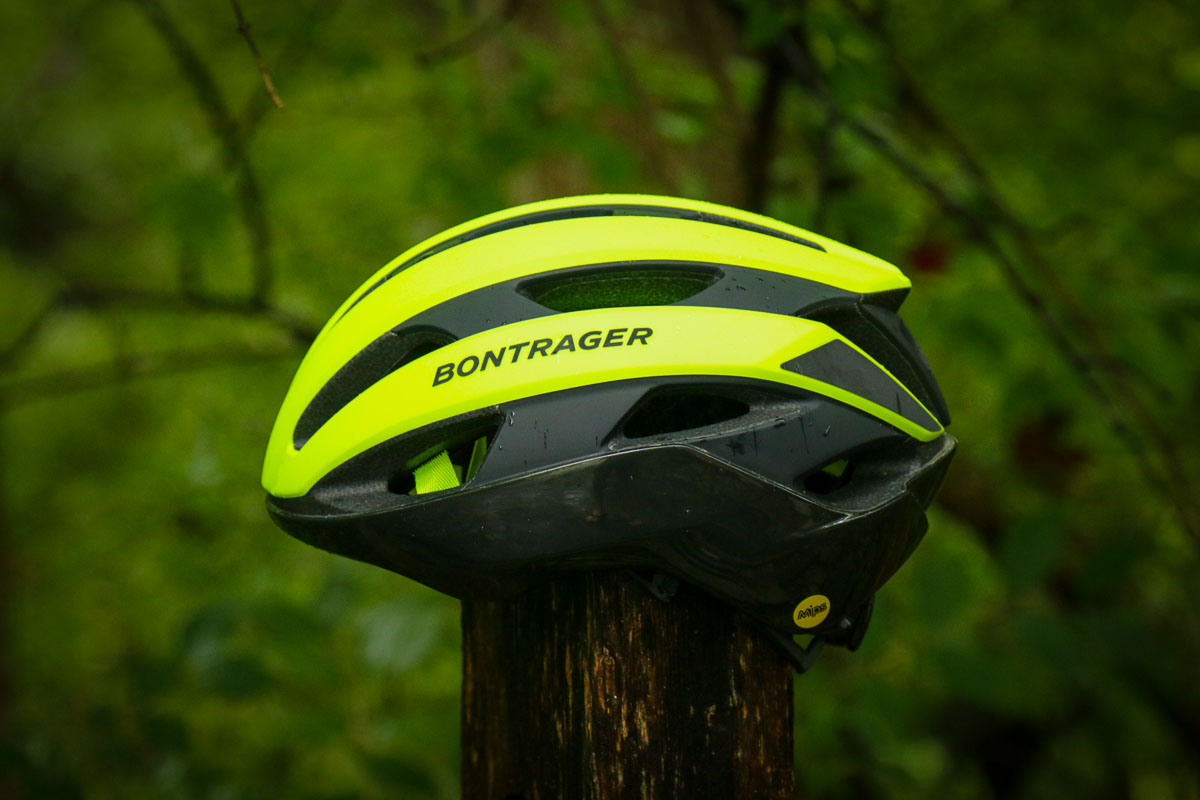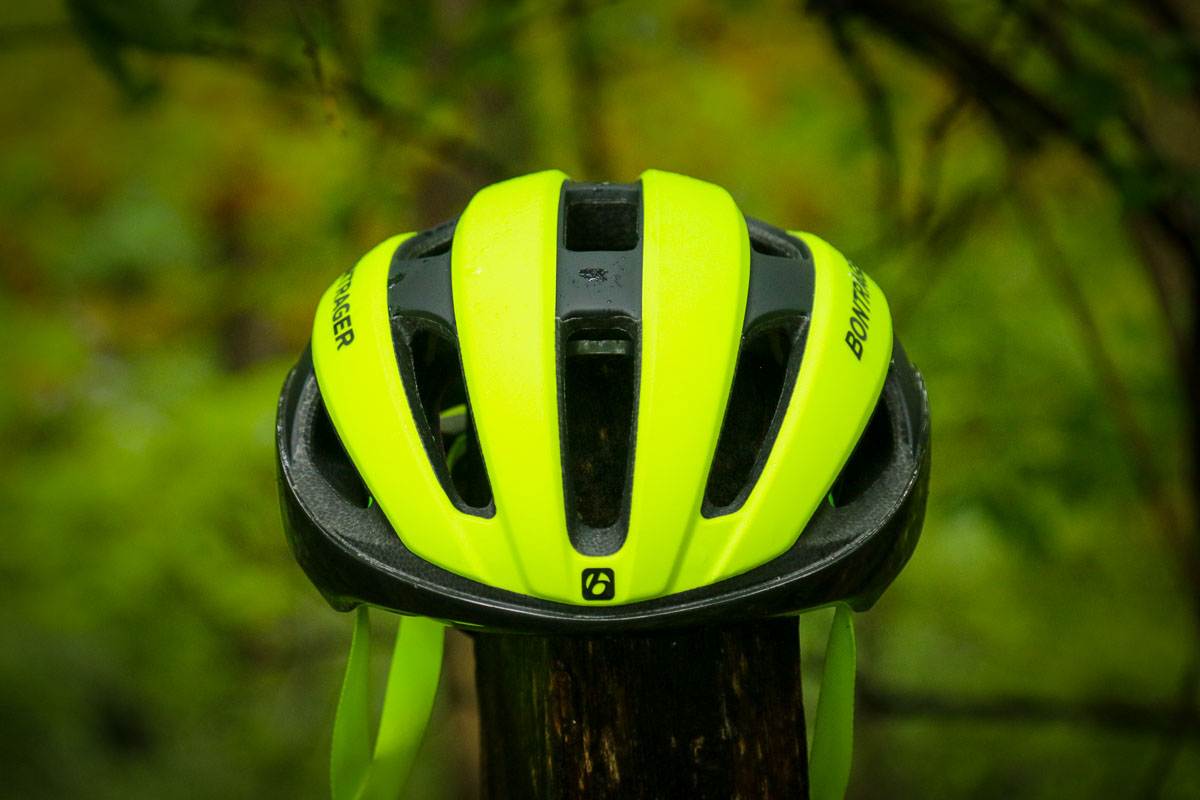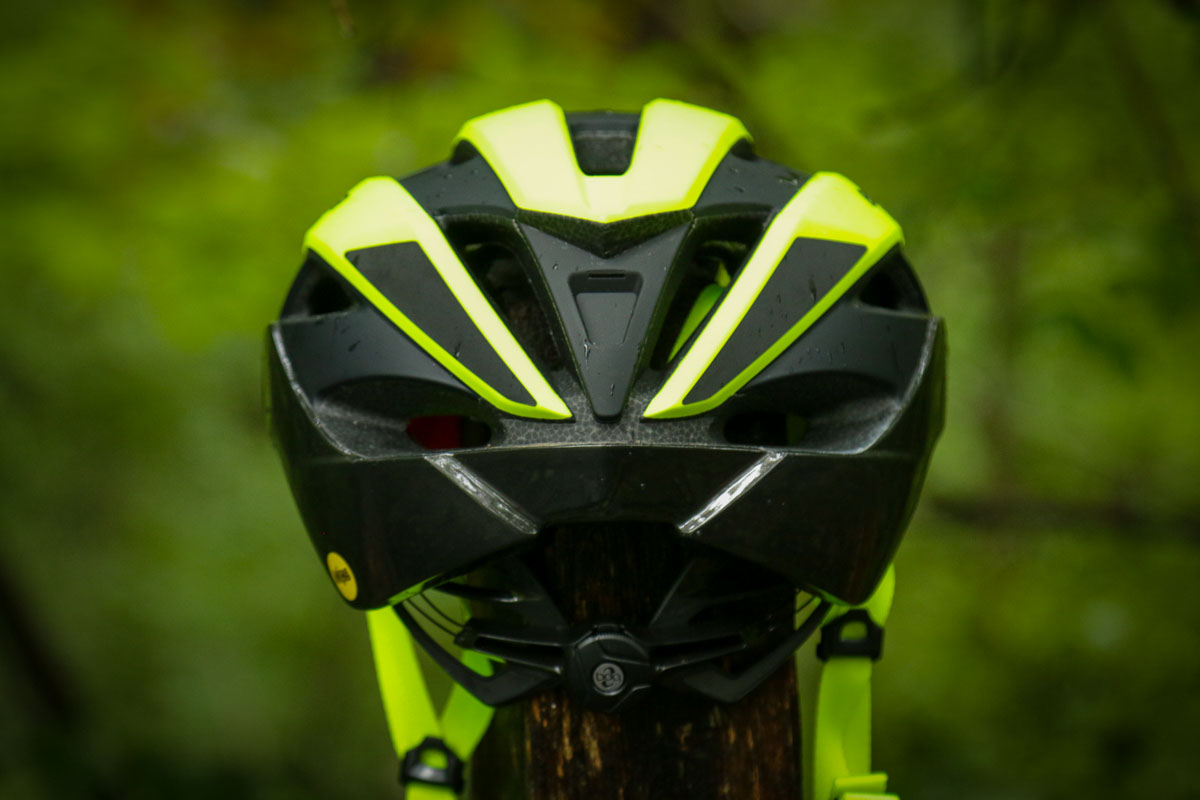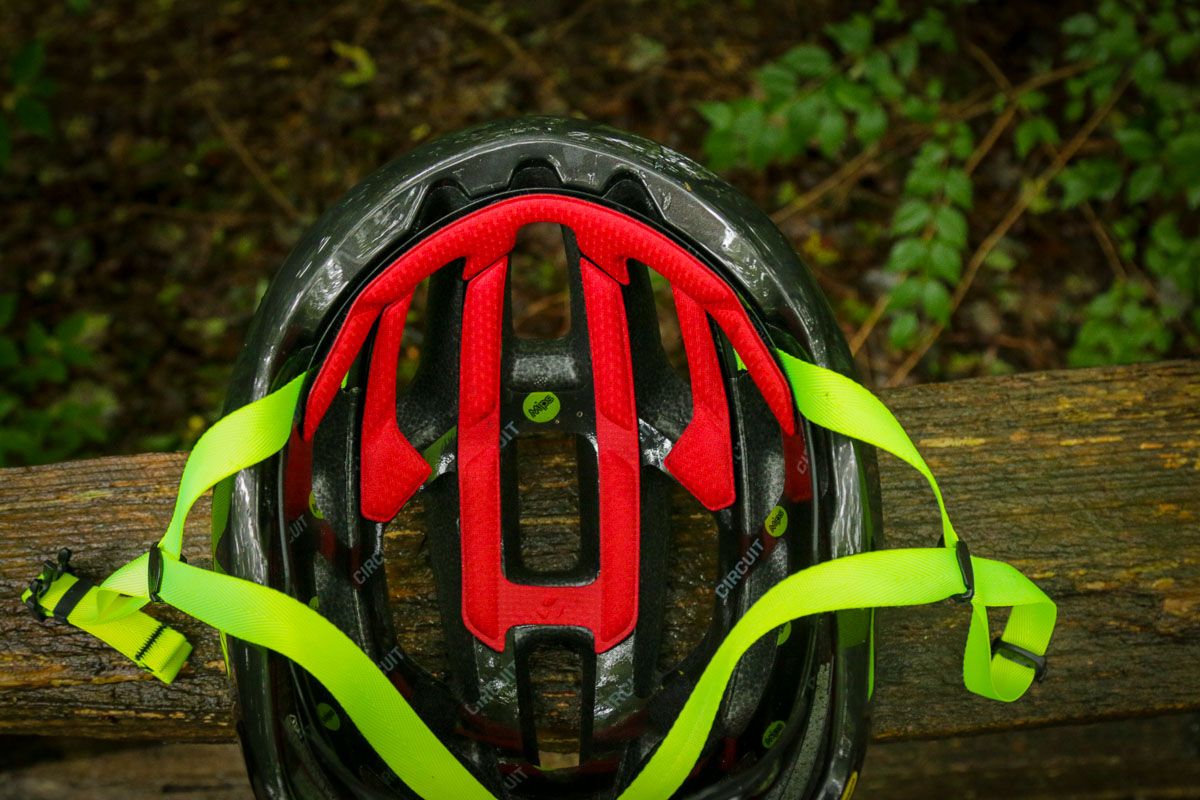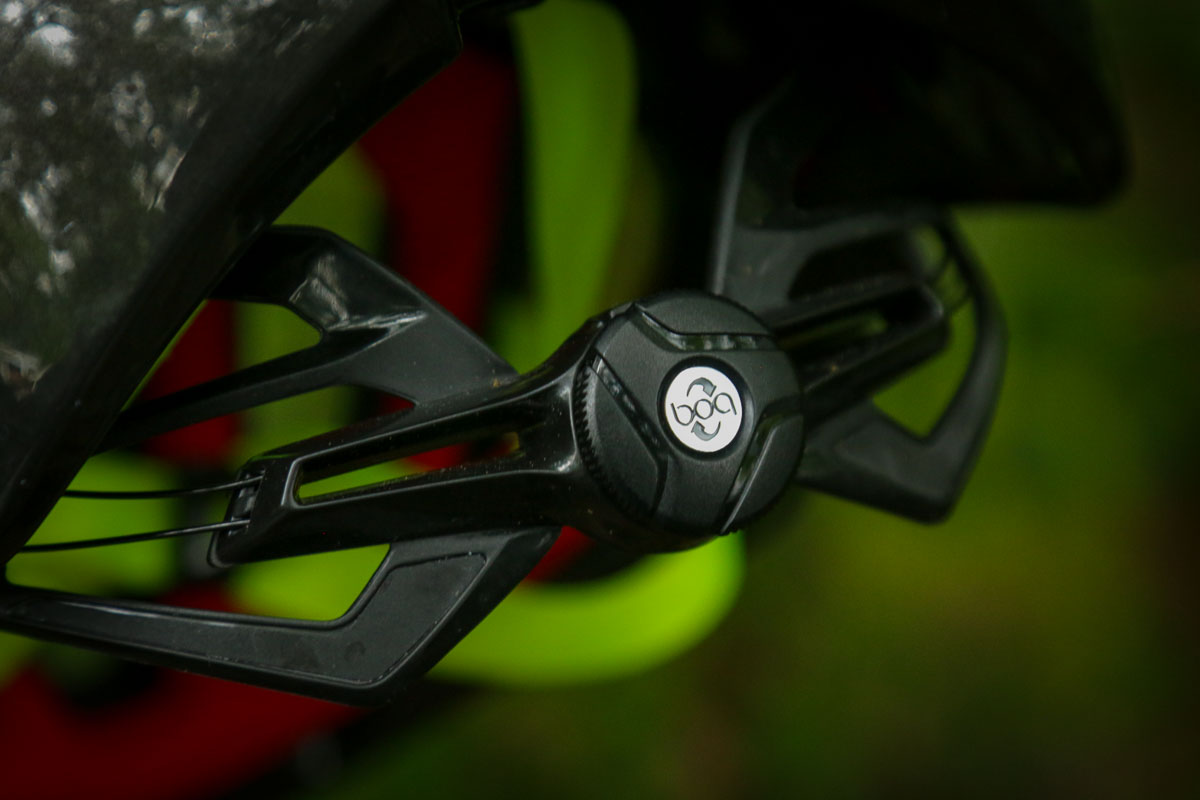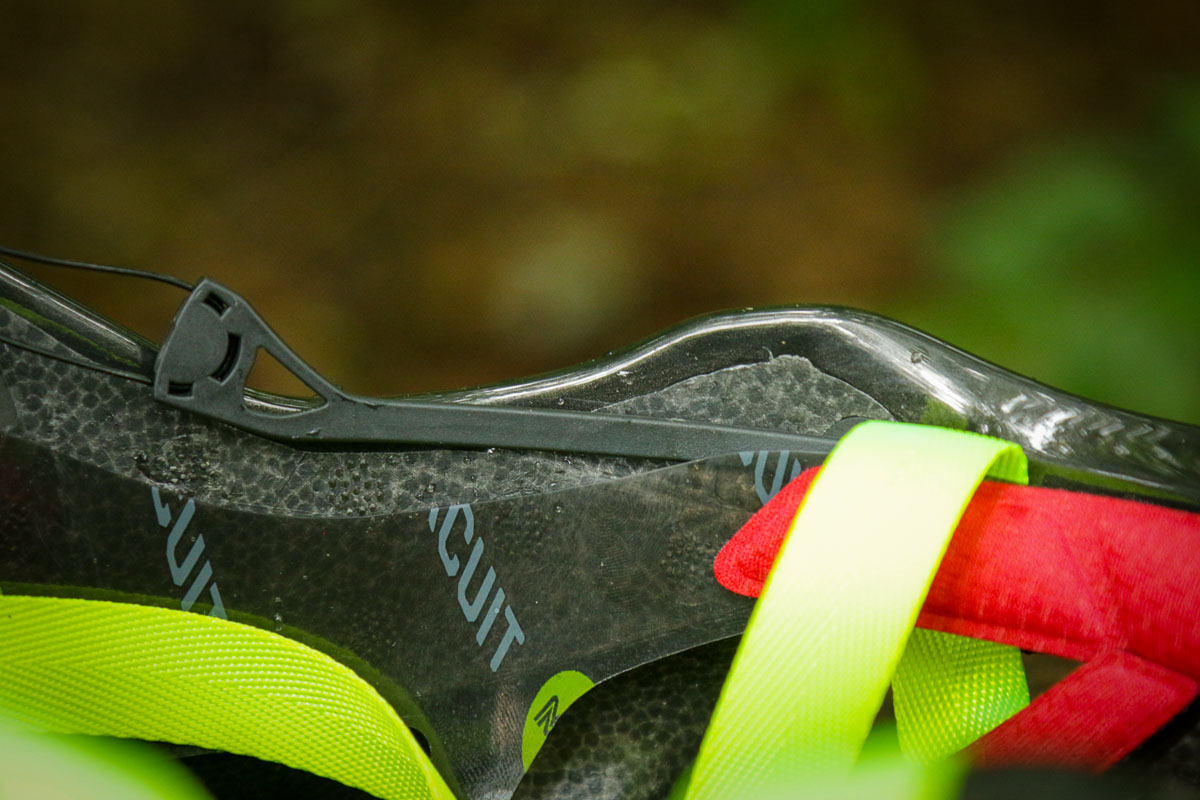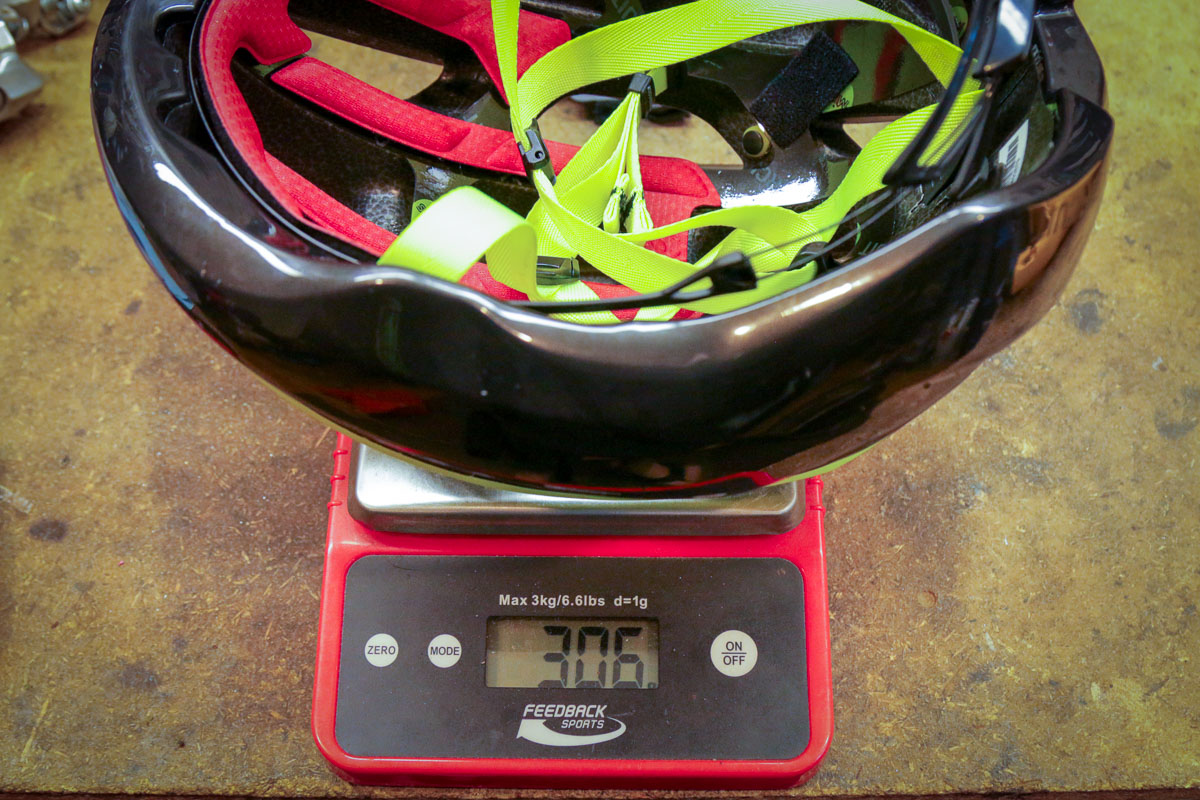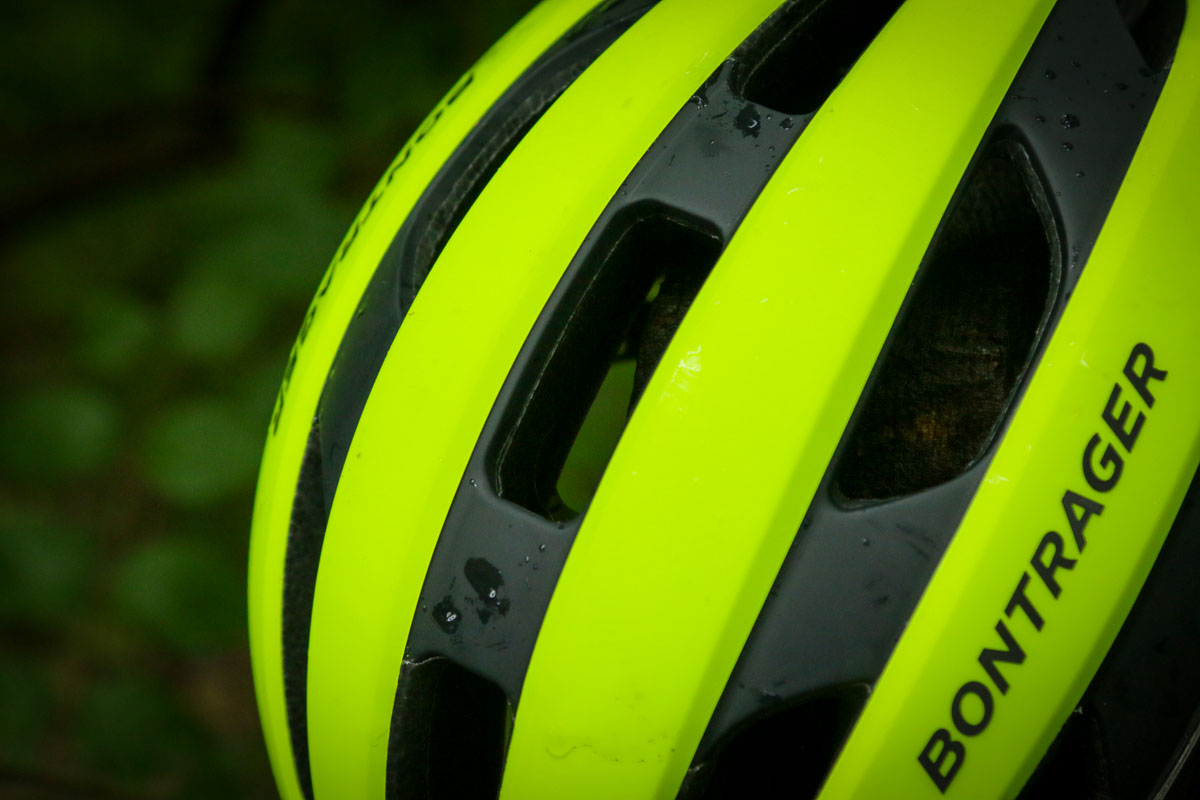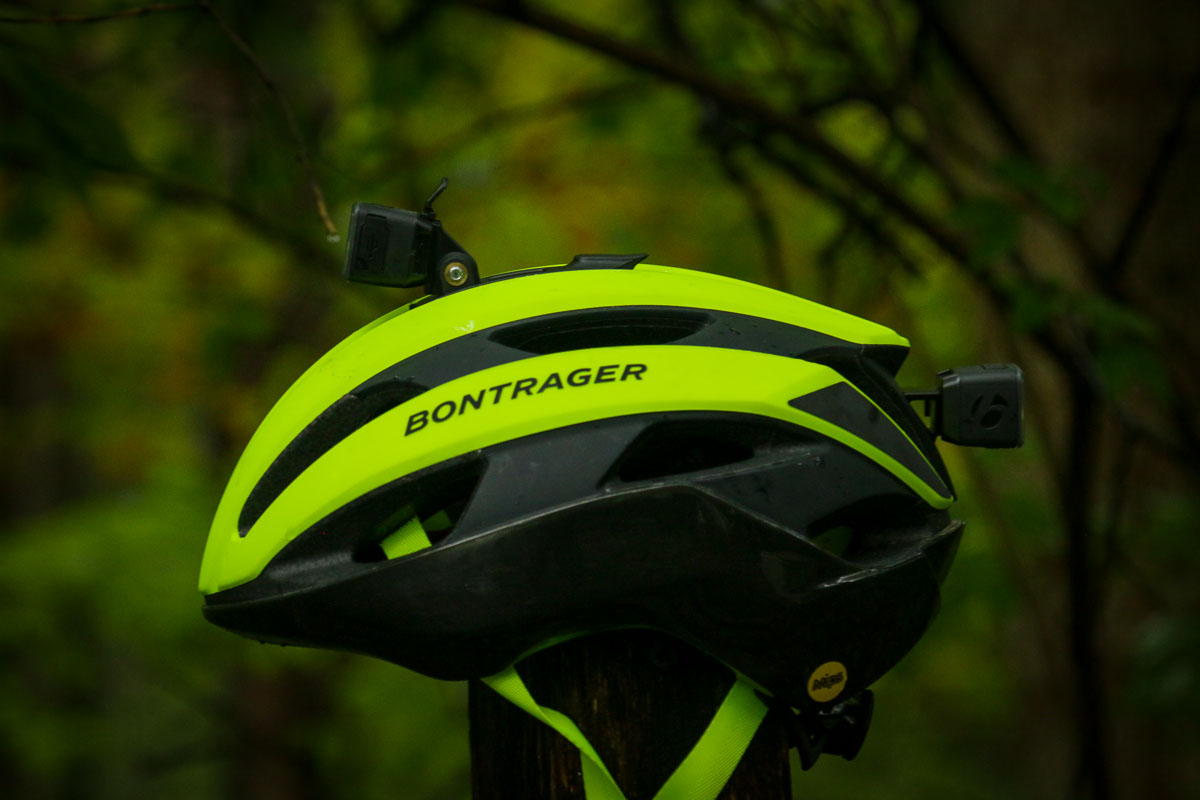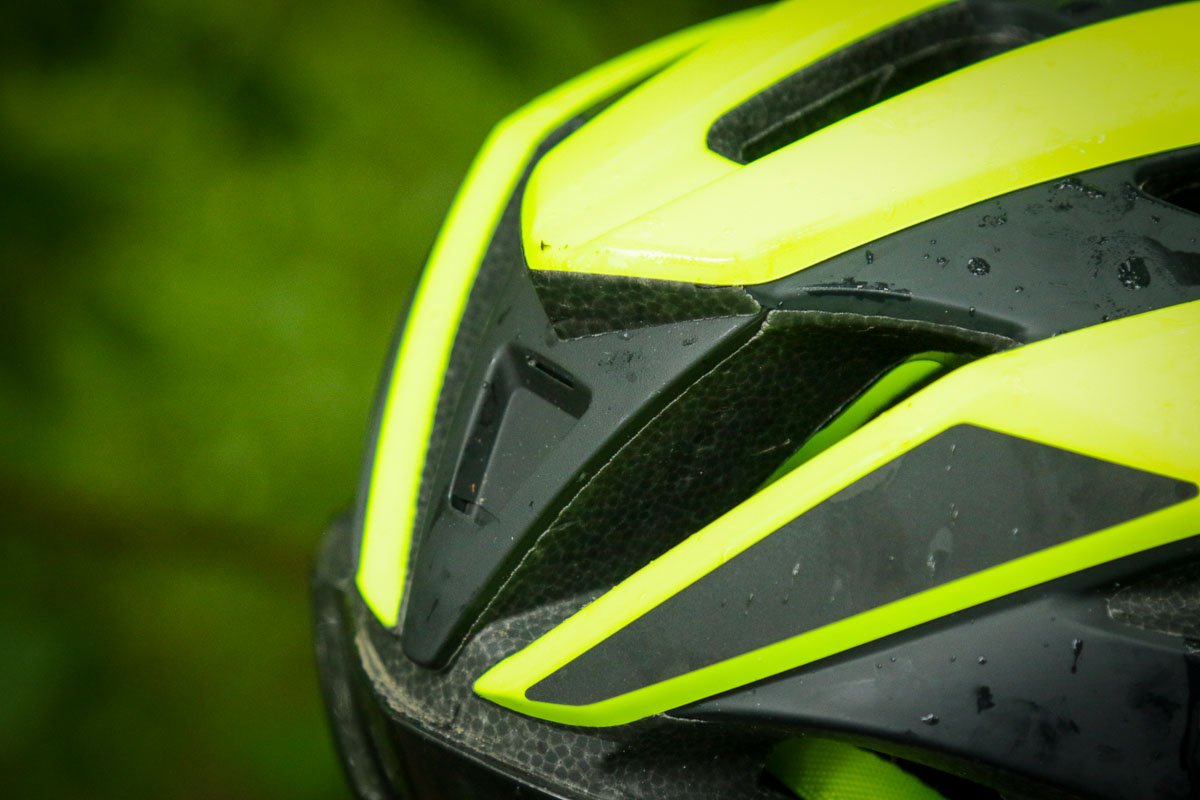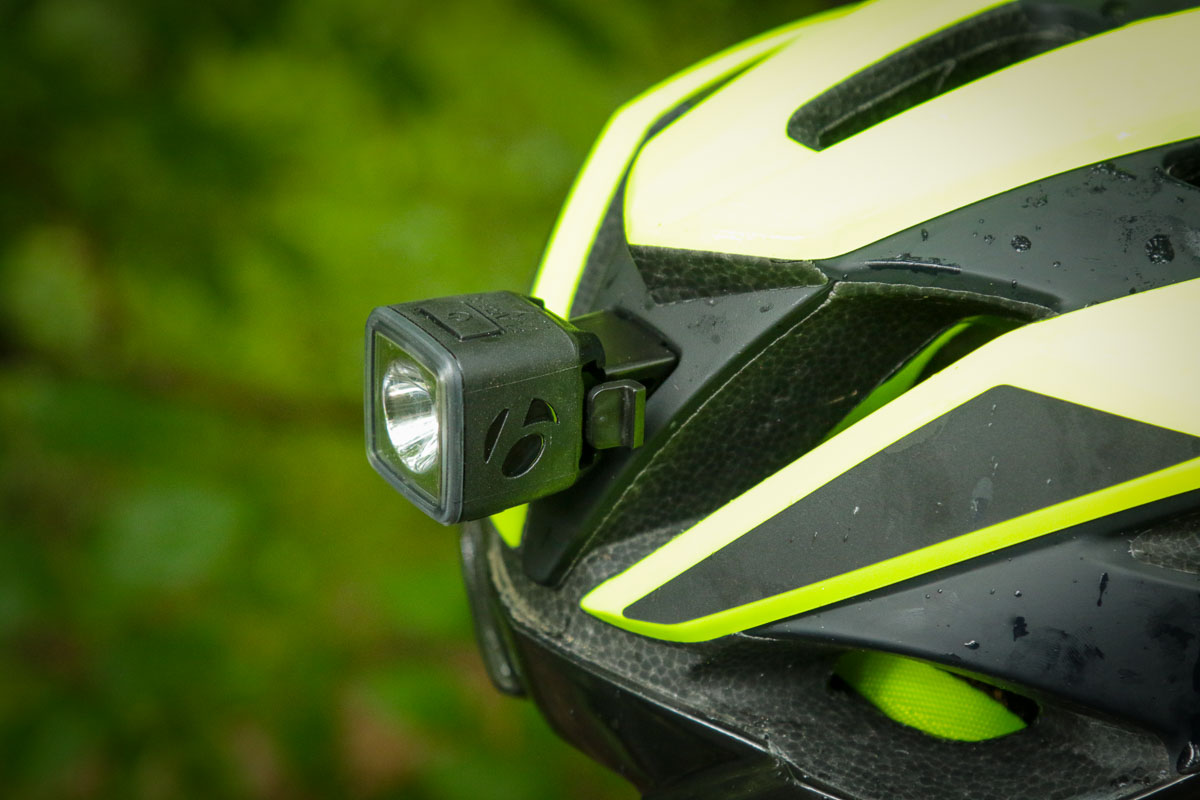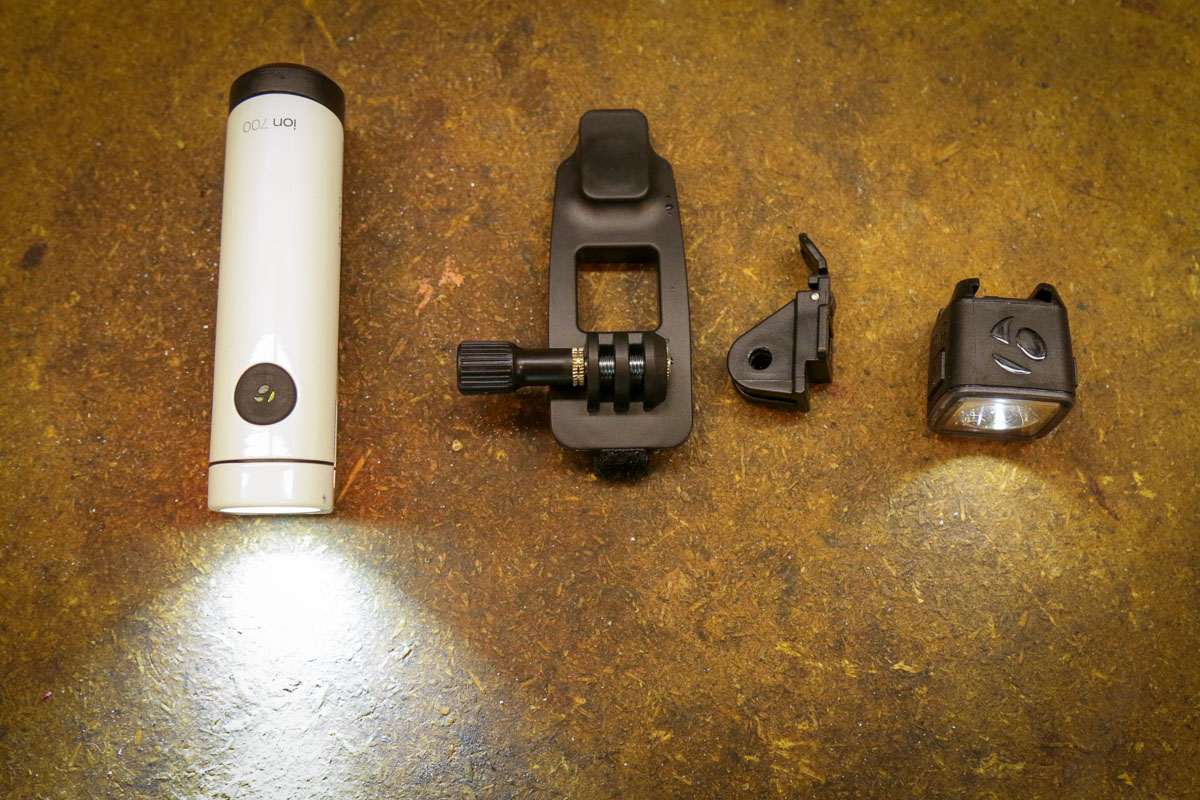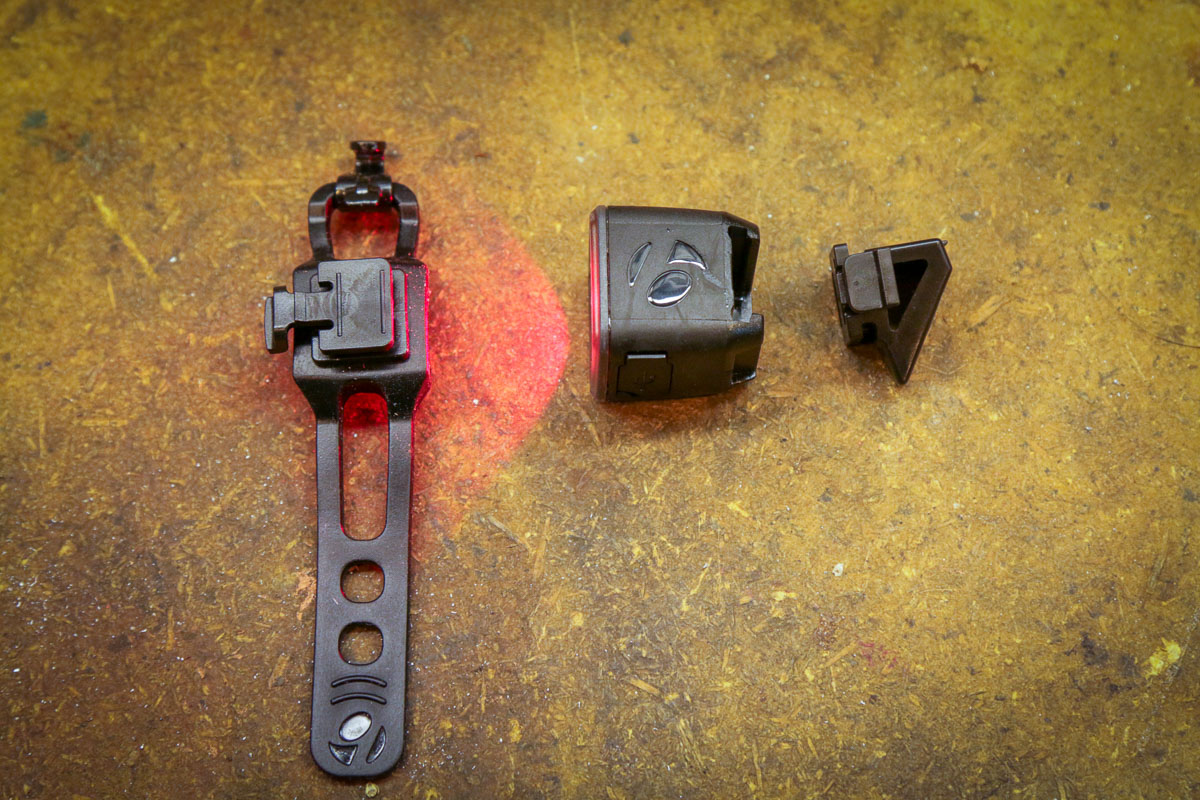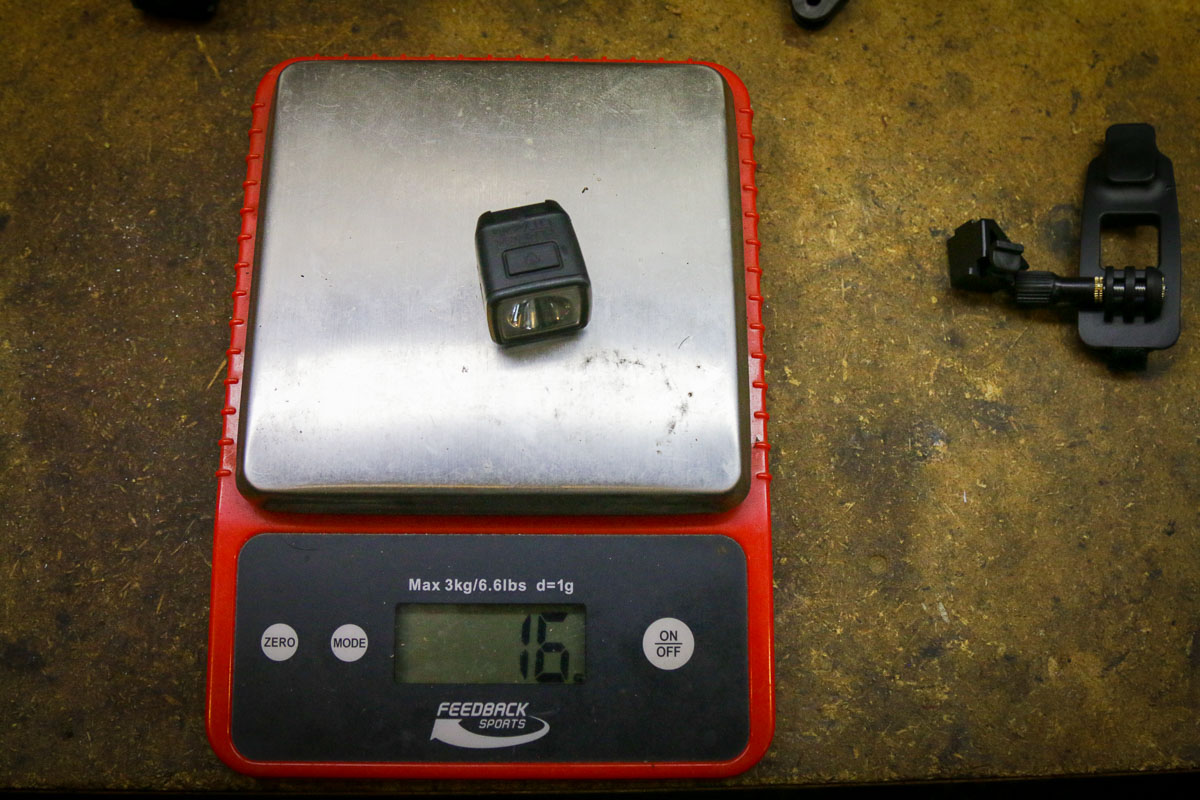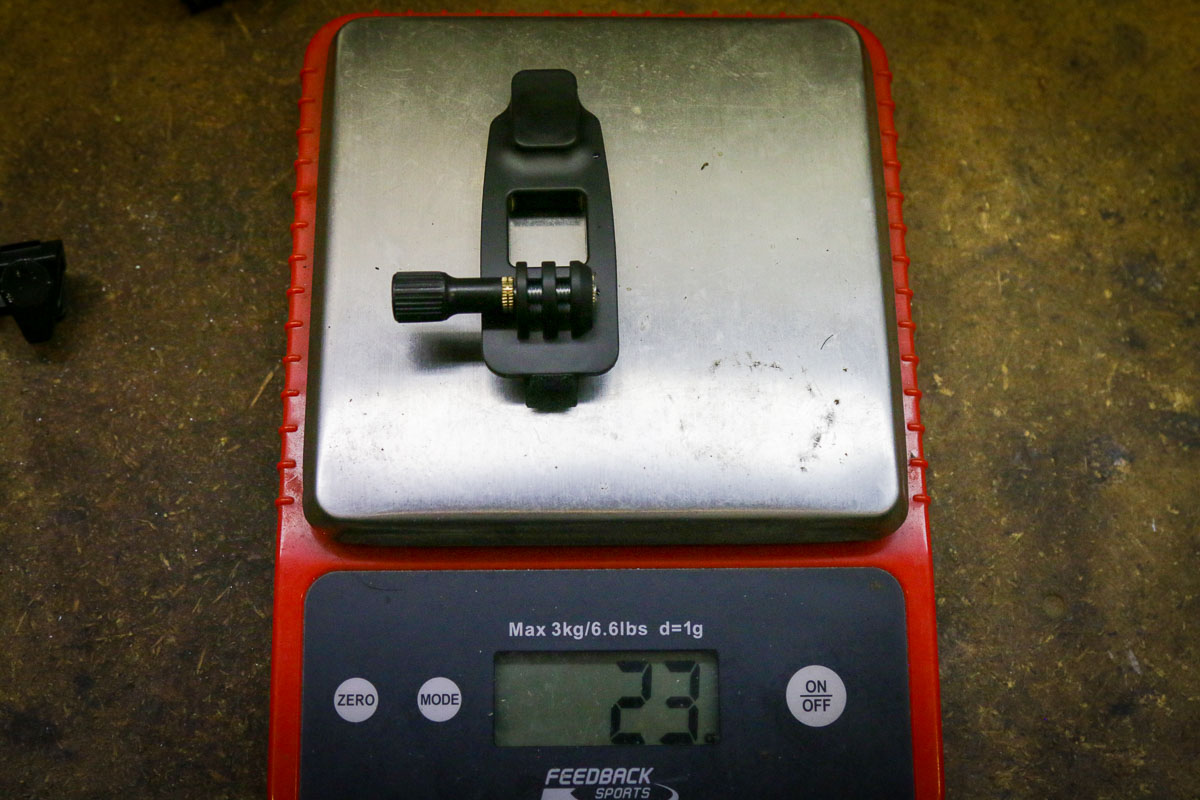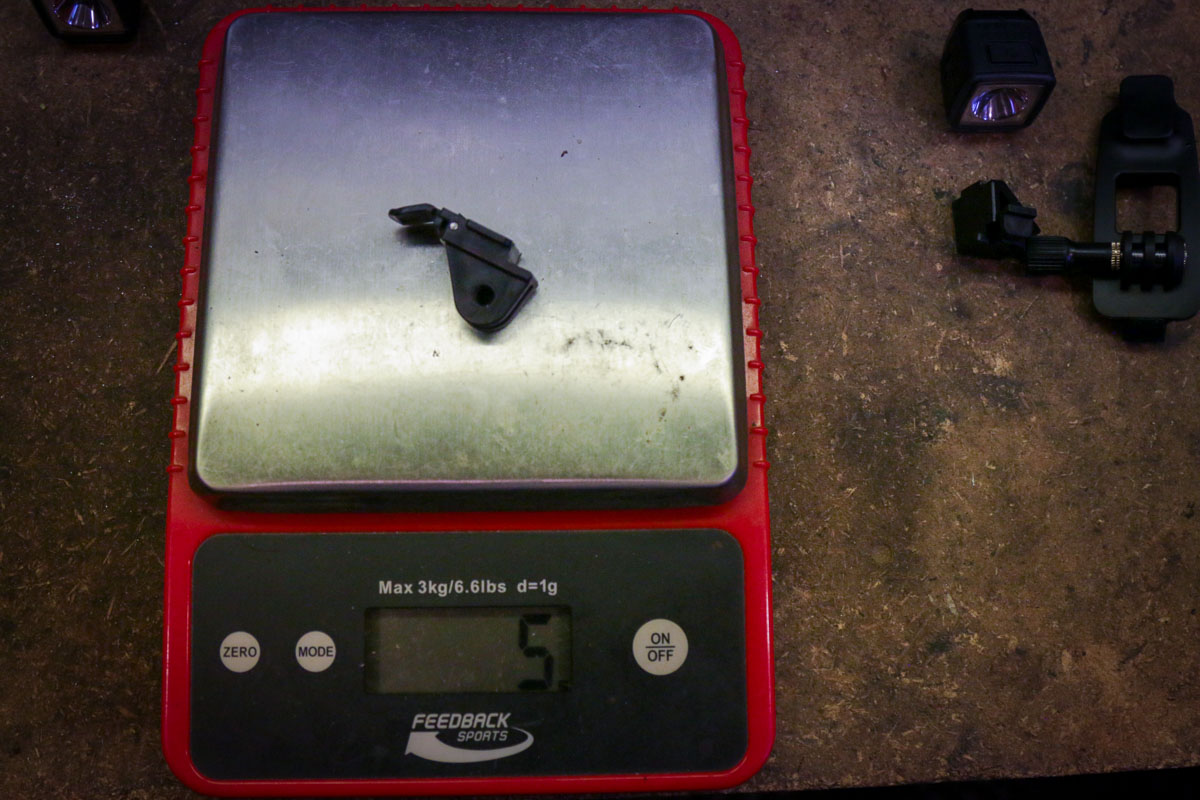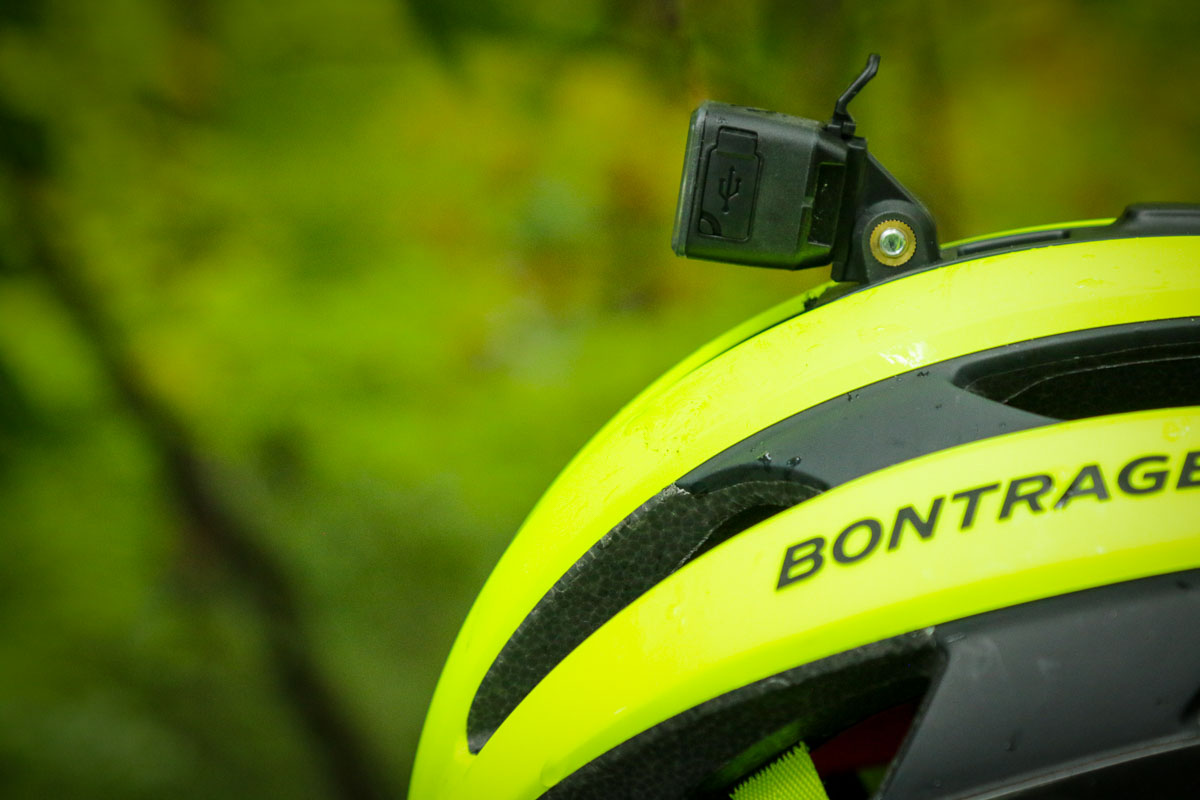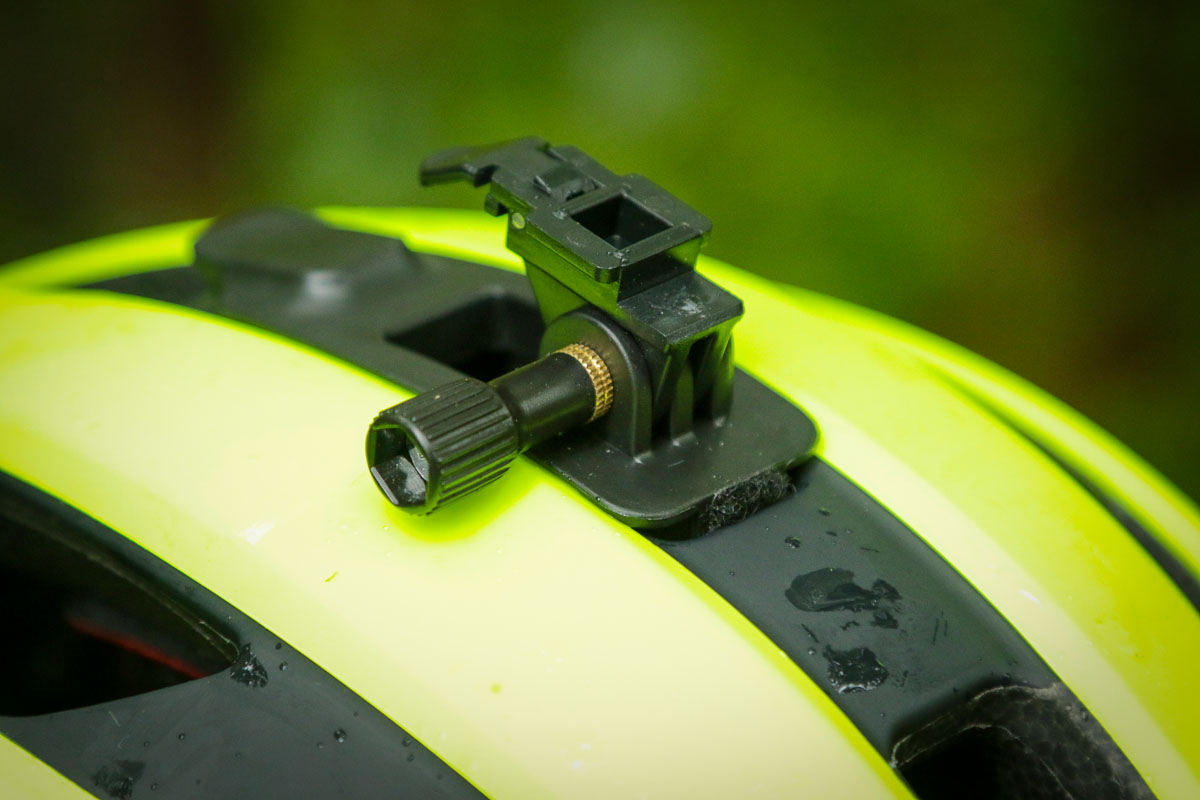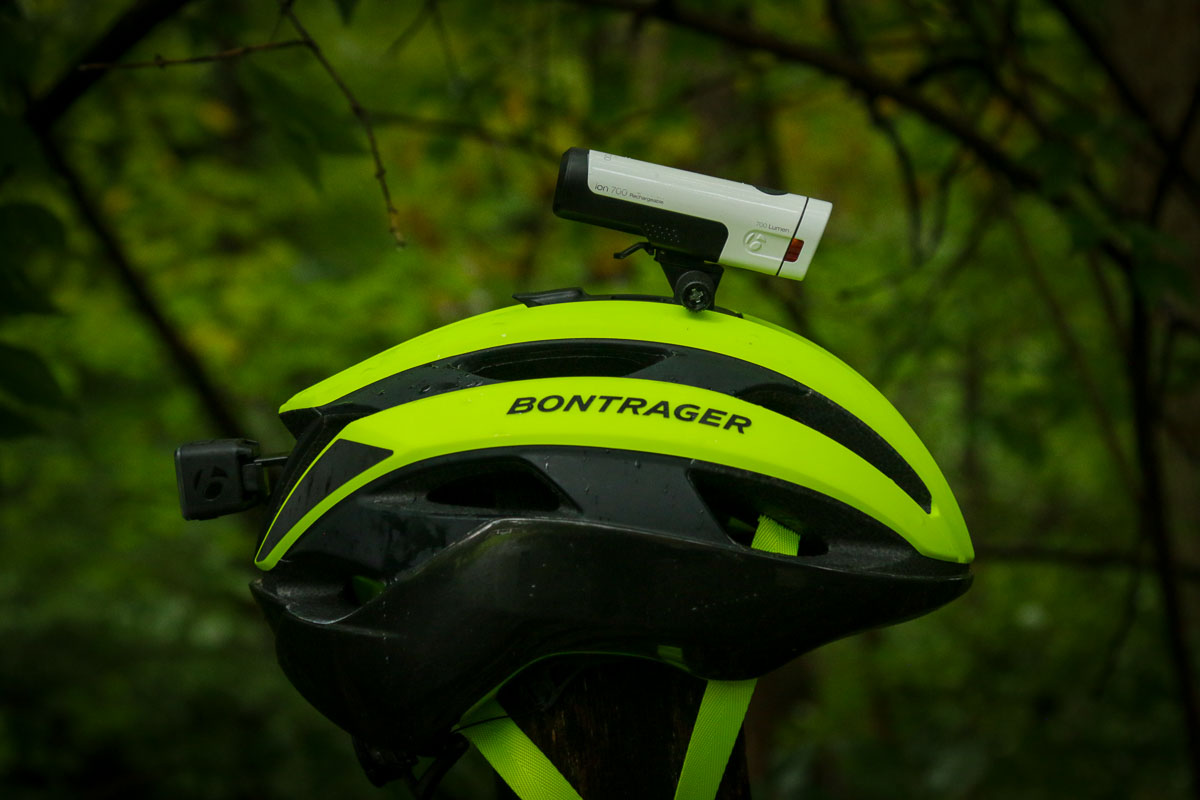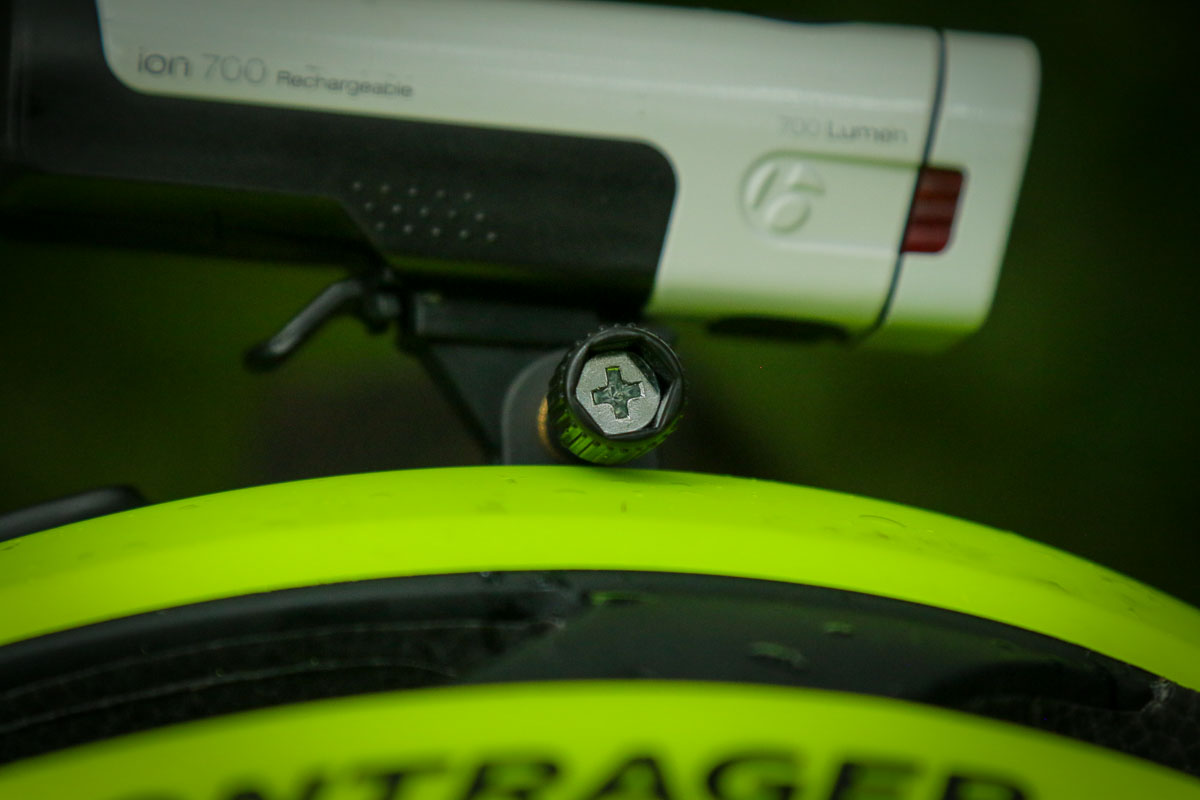Like clockwork, as soon as September 1st rolled around, our days have gotten shorter. It’s during these dark, often stormy days that I start to think about visibility out on the road – even more than usual. This is also the time of year where I have to start bringing headlights since our rides routinely end (or start) in the darkness. I received the Bontrager Circuit MIPS helmet earlier in the year, and while it’s been a great summer companion, it has really stood out as summer transitions into fall.
Obviously, our review helmet arrived in a striking combination of Visibility Yellow and Dnister Black, but there are seven other less visible colors to choose from. Honestly, I think the helmet looks pretty good in high vis yellow, and I’m more apt to grab a high vis helmet when I head out on the road, so this is a good match.
Fairly large vents at the front do a great job at channeling air through the helmet and out the exhaust ports in back. On a few stifling rides down South, the helmet proved to be more than adequately ventilated – more so than the previous Bontrager helmets I’ve tested. This is probably due at least partially to the in-molded composite skeleton that allowed Bontrager to outfit the helmet with larger vents. They’re hardly the first company to do so, but it’s a nice touch.
Inside, a MIPS (Multi-directional Impact Protection System) is nicely integrated into the helmet along with a Boa retention system. To prevent longer hair from catching in the MIPS system, Bontrager covered the attachment points with felt pieces which is a nice touch. Note that this is not the new Boa-MIPS integration, but the two systems still play nice together inside the helmet and provide an incredibly comfy fit.
As usual, the fit system offers multiple positions of vertical adjustment, while the Boa dial makes it simple to fit the helmet to your head with one hand. The straps feature LockDown dividers to allow you to adjust the straps, though they do end up a bit floppy because the material is so light. Part of that comfort has to be attributed to the AgION anti-microbial pads which still smell fresh after a season’s use.
This medium helmet came in at 306g, which is 6g over claimed. Not bad.
Magnetic Mounts
On its own, the Circuit MIPS would already be a great helmet and well worth the price. The fact that Bontrager integrated their Blendr mounts with magnetic attachments makes this helmet a true standout. Both front and rear mounds are almost completely hidden when not in use.
But when it’s time to add lights, the installation couldn’t be easier. The front light mount simply flops into place – just make sure to insert the front tab first, and then you can basically just let go of it and let the magnets do the work.
The rear is also magnetic, but the mount actually “locks” into place with a snap. Start with the bottom tab in the mount, and then push it in until it snaps up top. Both mounts can be added or removed in seconds, and stay in place over rough terrain. However, if you were to crash, I’d expect the mounts to pop off fairly easily which should be safer than them staying in place.
Bontrager Ion/Flare Lights
The helmet was sent to me with a set of Bontrager Ion 100 R front and Flare R City Rear lights. In terms of the lightest, smallest, brightest, and rechargeable set up you can get, it doesn’t get much better than these. They have a claimed weight of 27g each, but when you remove the rubber strap, the little squares come in at just 16g each. Then the lights both snap into the magnetic mounts included with the helmet.
At 16g for each light, 28g for the front mount (weighed above in two parts), and 6g for the rear mount (not pictured), you’re looking at just 66g for an integrated, rechargeable, and surprisingly bright lighting system front and rear. If you want to add the lights to your helmet, they’re sold separately for $39.99 each, or as a set for $69.99. Bontrager also offers options like the Ion Pro RT/Flare RT combo which will increase the lumens and run time.
However, this combination isn’t perfect. Due to the orientation of the mounting slot on the front Ion 100 R, the angle of the light is limited. The light is shown above in its lowest position as the mount hits itself, and can’t rotate any further down. However, this isn’t the end of the world since this light is more of a “to be seen” light than “to see with”. When you’re in riding position, the light should be pointed fairly straight forward, but it won’t do you a lot of good off the bike to see things.
Fortunately, there are also a lot of other ways that you can use the mount. For starters, the base is the standard GoPro style mount which can be used for many cameras and lights. But – since the front mount doesn’t actually “lock” in, larger lights and cameras may be a bit much for the power of the magnet so keep that in mind.
You can also use the mound for Blendr equipped Bontrager lights like the Ion 700. Not only is this light strong enough to actually see with, but it’s perfectly designed for the mount so you can position it properly.
Like most GoPro mounts, it’s tough to get the thumb screw tight enough with just your hands to keep the light in place. So it’s best to tighten it down with a Phillips head screwdriver once you’ve got it aimed properly.
Final Thoughts
Priced at $150, the Circuit MIPS is already competitively priced. But most of its competition in that price range don’t have integrated light mounts, and even those that do – they’re not nearly as sleek as the magnetic Blendr mounts found here. The resulting helmet is nearly a perfect blend of functionality, fit, and safety. Given the fact that the light mounts don’t interfere with the performance of the helmet at all when they’re not in use, there’s really no reason not to recommend the Circuit MIPS as your next helmet – especially for this time of year when visibility becomes more important than ever.
